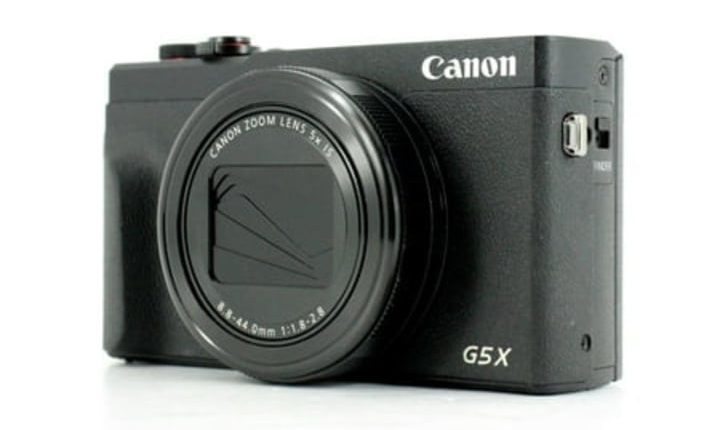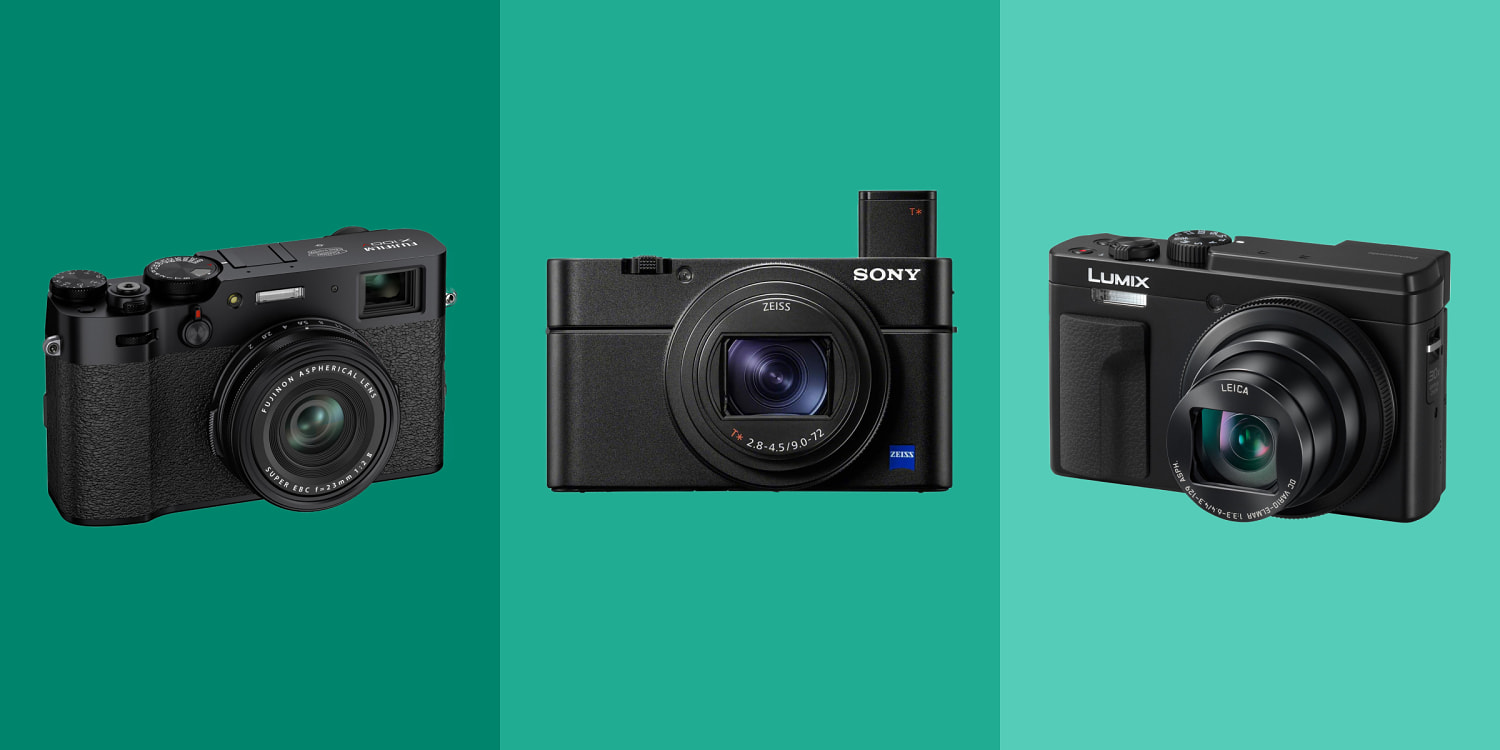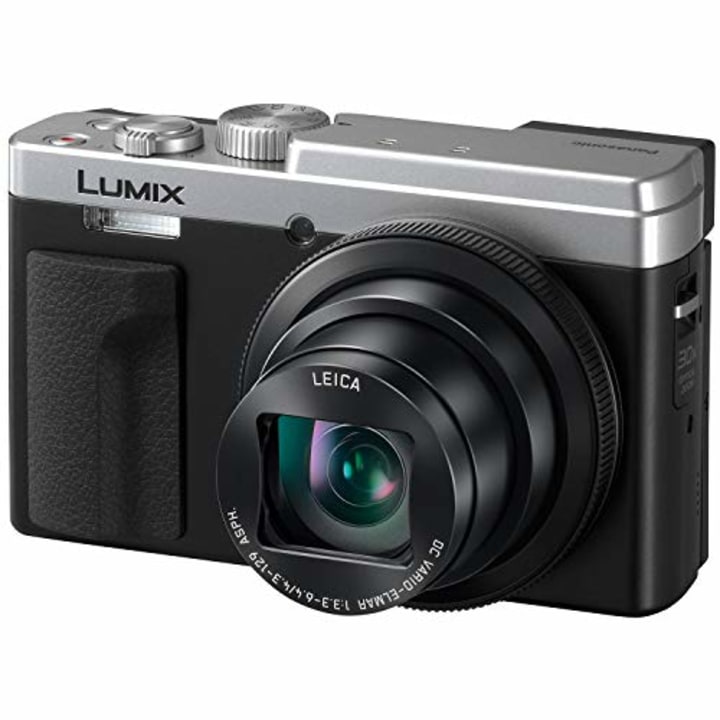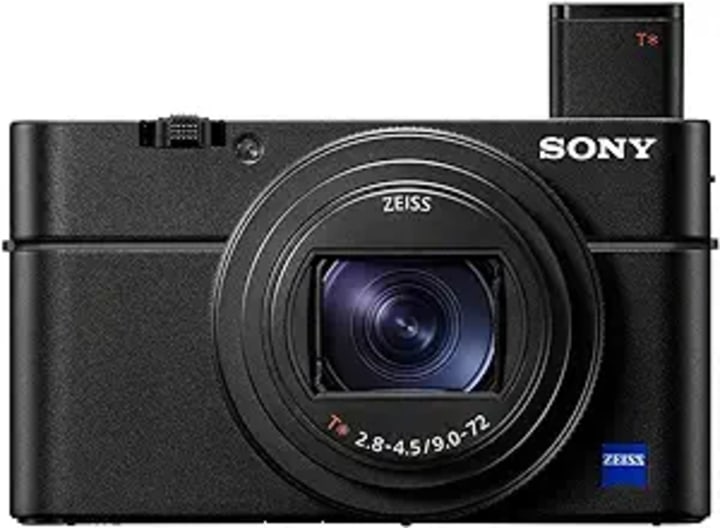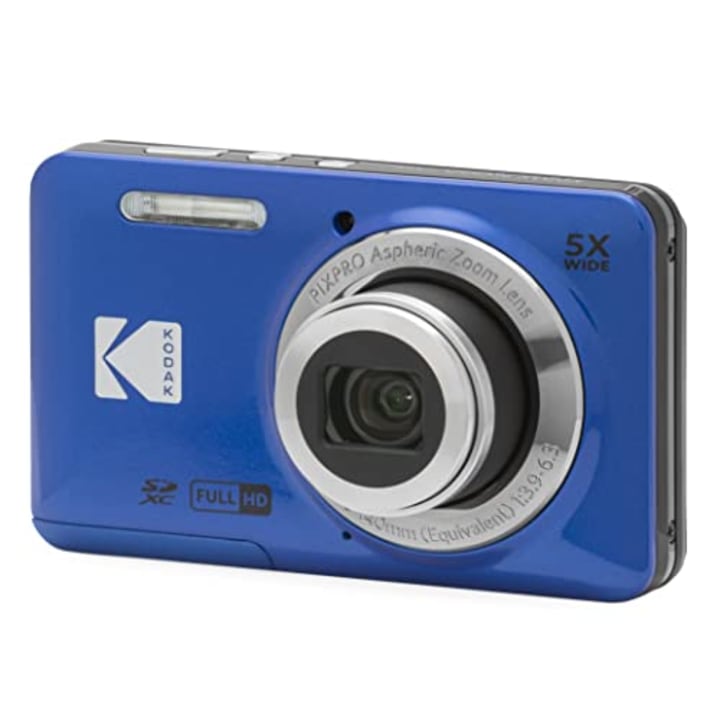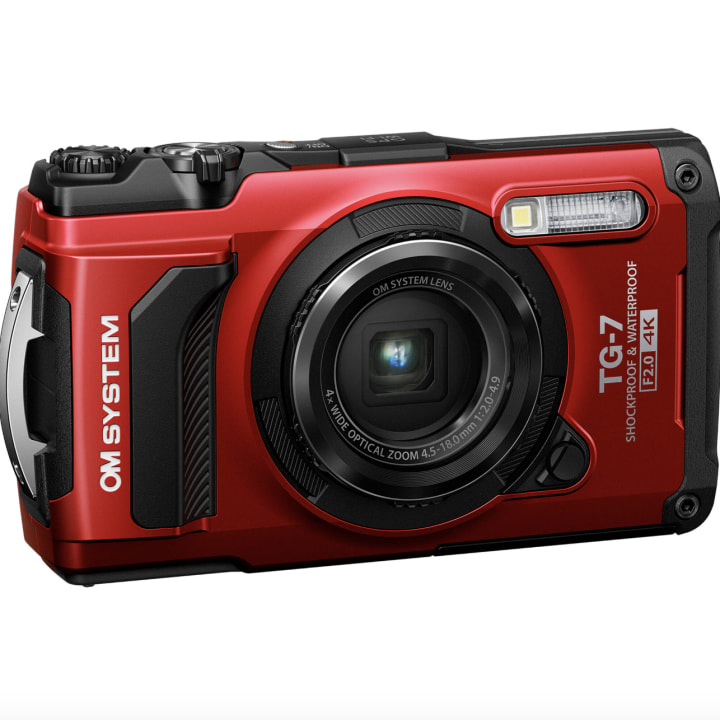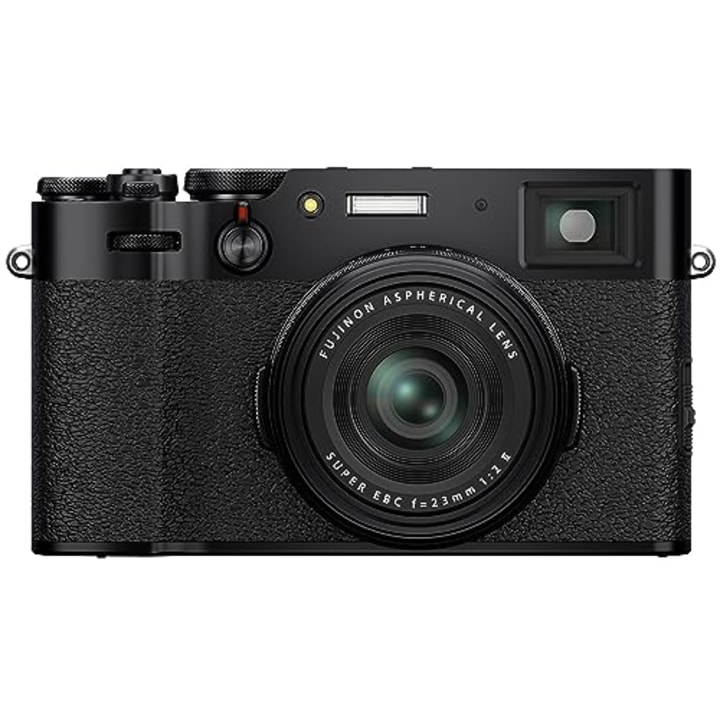A point-and-shoot camera is one of the most compact cameras you can buy. They are typically a bit larger than a smartphone, but still easily fit in a pocket, fanny pack or purse. However, since smartphone cameras have gotten so good at taking detailed photos and videos, brands aren’t making as many point-and-shoot cameras these days, according to our experts.
SKIP AHEAD The best point-and-shoot cameras in 2023 | How to shop for a point-and-shoot camera
Top-rated point-and-shoot cameras are still in high demand and are often out of stock or backordered at retailers nationwide, however. To find out why, and to find the best point-and-shoot cameras on the market, we spent a month trying some of the most popular options and speaking with professional photographers about what makes point-and-shoot cameras worthwhile.
What is a point-and-shoot camera?
A point-and-shoot camera is typically a small, compact model with a built-in lens and features like automatic photo and video modes, according to our experts. This is different from DSLR and mirrorless cameras, which can range in size and weight and have larger, removable lenses.
There are lots of sub-categories within point-and-shoot cameras, including “super zoom” models with longer lenses, says Mark Steinberg, the senior technologist at B&H Photo & Video. We focused on the more portable and compact varieties of point-and-shoot.
How we picked the best point-and-shoot cameras
We tried top-rated point-and-shoot cameras from brands like Canon, Sony and Panasonic for about a month. We only included the cameras we felt went above and beyond our expectations. We also spoke with professional photographers for guidance on the more technical aspects of cameras and the state of the camera industry at large. Based on their guidance, we kept the following in mind:
- Portability: A point and shoot is at its best when it fits easily into a bag and doesn’t weigh you down. All of our top picks weigh one pound at most and are small enough to fit into most bags, purses, fanny packs or even a jacket pocket.
- Control: All our experts agree that point-and-shoot cameras can be easier to use than DSLR and mirrorless cameras, which can be intimidating and cumbersome to use. At the same time, a point-and-shoot camera should let you control elements like ISO (International Organization for Standardization), aperture and shutter speed unlike a smartphone, which has more basic camera settings. We prioritized cameras with dials and buttons that make it easy to fine-tune such settings.
- Zoom: One area where point-and-shoot cameras excel is zoom — most can zoom to far distances while still remaining light and compact. We favorited models with ample zoom range for added flexibility shooting people, landscapes and wildlife.
The best point-and-shoot cameras in 2023
Our top picks come from large camera brands like Canon, Sony and Panasonic. We list specs like weight, battery life and photography elements like sensor size, zoom, aperture and shutter speed. You can learn more about photography terms on learning sites like Adobe, MasterClass, Skillshare, and Expert Photography.
Best overall: Canon PowerShot G5 X Mark II

Elsa Garrison, a senior staff sports photographer at Getty Images, pointed to Canon PowerShot as the point-and-shoot she’s used the most. She did not recommend a particular model, so multiple NBC staffers tried out this PowerShot G5 X Mark II, and thought it was the most intuitive of all the cameras we tried.
NBC Select editorial projects manager Rebecca Rodriguez, who has used instant cameras as well as DSLR and film cameras in the past, was impressed by how detailed the images were, especially with how small the camera is. It was able to capture separation between subject and background very well, and maintain clear colors and edges even when zooming in on photos. She says it was great for social settings — she was able to get more candid shots of friends because of its compact size and subtle design.
Rodriguez used the Canon Camera Connect app to transfer photos from the camera to her phone, with some success. The app would disconnect randomly, or occasionally not transfer the photos. (These are common problems we had with nearly every camera connecting app we used.)
If this model is out of your price range, Canon also makes the similar PowerShot G7 X Mark III at a lower price point, but it does not have a pop-up viewfinder like the G5, however.
Weight: 12 oz / 340g | Dimensions: 4.37 x 2.4 x 1.81 in. | Battery life: Up to 230 shots or 55 mins. of video | Screen: Tilting, flip-up | Viewfinder: Yes, pop-up | Flash: Yes | App: Canon Camera Connect | Zoom: 24-120mm | Aperture: f/1.8-2.8 | Sensor: 1-inch 20.1MP | Shutter speed: 15 to 1/2000 sec. | ISO: 125-12,800 | Photo resolution: Up to 5472×3072 | Video resolution: Up to 4K at 30FPS
Best zoom: Panasonic Lumix ZS80 (OOS)

Multiple experts called out the Panasonic Lumix series as lower-priced options with great features. This model has a flip-up screen for easy selfies, built-in flash for night shots, 4K video capabilities and more, and costs less than $500.
Its best feature is its long zoom range — up to 720mm, longer than any camera on our list. I used it to take photos of things I couldn’t even recognize with my eyes, like tiny disco balls strung on the rooftop of a five-story building. That long zoom length makes it well-suited to natural subjects — flowers, birds, trees.
This camera has a smaller sensor than our top overall pick, which means it captures noticeably less detailed images, especially indoors or in poor lighting.
If this model is out of stock, the Lumix ZS100 is similar, it has a larger sensor (1-inch) but less zoom range (25-250mm).
Weight: 11.57 oz / 328g | Dimensions: 4.4 x 2.7 x 1.6 in. | Battery life: Up to 250 shots or TK minutes of video | Screen: Flip-up | Viewfinder: Yes | Flash: Yes | App: Yes, Panasonic Image app | Zoom: Yes, 24-720mm | Aperture: f/3.3-6.4 | Sensor: 1/2.3-inch 20.3MP | Shutter speed: 1 to 1/2000 seconds (1 to 1/16,000 electronic) | ISO: 80-3,200 | Photo resolution: Up to 5184×3888 | Video resolution: Up to 4K at 30FPS
Best splurge: Sony Cybershot RX100 VII
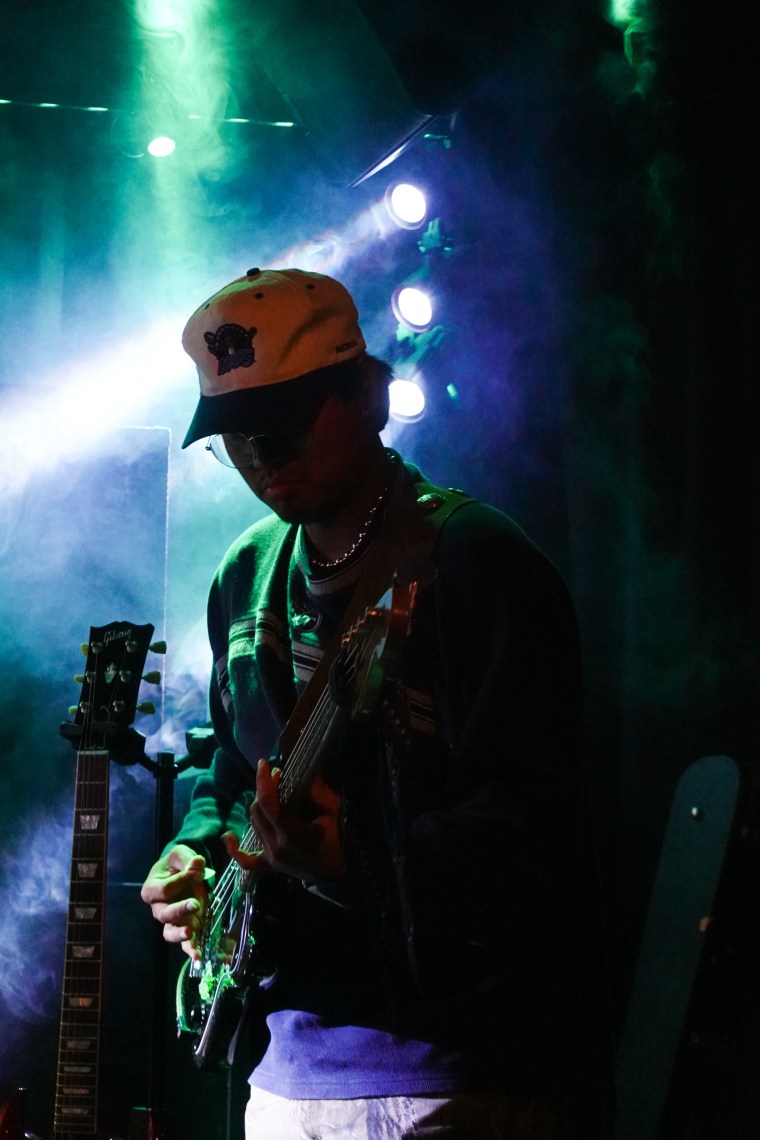
Photographers and artists looking for something compact and high-quality should consider this premium point-and-shoot camera. It took noticeably more detailed photos and videos than every other camera we tried.
NBC News commerce photo editor Kara Birnbaum, a longtime film and digital photographer, says this was the best point-and-shoot camera she has ever used. The images look crisp and clean compared to our Canon and Panasonic recommendations. The small size made it easy for Birnbaum to bring it with her everywhere and snap photos when inspiration struck — something she’s found hard to do with her bulkier film and mirrorless cameras.
This also took the best night shots of our recommendations. It was able to capture crisp images without much noise or grain without using the flash often. That said, its low-light image quality is worse than the larger DSLR and mirrorless cameras Birnbaum typically uses.
If you like the look and feel of these images, but not the price tag, consider the Sony ZV-1 as an alternative. It is more streamlined for taking videos rather than shooting photos, but has largely the same button controls and similar specs.
Weight: 10.65 oz / 302g | Dimensions: 4 x 2.29 x 1.69 in. | Battery life: Up to 260 shots or 130 min. of video | Screen: Tilting, flip-up | Viewfinder: Yes, pop-up | Flash: Yes | App: Sony Imaging Edge Mobile | Zoom: 24-200mm | Aperture: f/2.8-4.5 | Sensor: 1-inch 20.1MP | Shutter speed: 30 to 1/2000 sec. (1/32,000 with electronic shutter) | ISO: 100-12,800 (extended 64-25,600) | Photo resolution: Up to 5472×3648 | Video resolution: Up to 4K at 30FPS and 1080p and 120FPS
Lowest price: Kodak Pixpro FZ55
If you are only looking to spend around $100, but want something with more control than an instant camera, consider this option from Kodak. It lacks the image detail of our other picks, with a small, less comprehensive sensor only capable of taking HD, not 4K, video. But it is one of the most affordable point-and-shoot cameras on the market, with a 4.2-star average rating from over 700 reviews on Amazon. It’s a good gift option for anyone looking to test the waters of photography.
Weight: 3.7 oz / 106g | Dimensions: 3.6 x 2.23 x 0.9 in. | Battery life: Up to 200 shots or 90 min. of video | Screen: Fixed | Viewfinder: No | Flash: Yes | App: No | Zoom: 28-140mm | Aperture: f/3.9-6.3 | Sensor: 1/2.3-inch 16.35MP | Shutter speed: 30 to 1/2000 sec. | ISO: 100-3,200 | Photo resolution: Up to 4608×3456 | Video resolution: Up to 1080p at 30FPS
For underwater: Om System Olympus TG-7 Underwater Camera
If you need a durable camera that can stand up to rough daily use, Steinberg recommends the Olympus TG series. (Steinberg works at B&H Photo, which sells hundreds of cameras, including the Olympus TG. Steinberg does not have affiliations with Om System, or any other camera brand.)
This TG-7 is the latest model, and is designed for extreme conditions. You can use it underwater up to 49.2 feet deep, according to the brand. It’s shockproof up to 7 feet and crushproof, able to resist up to 220 pounds of force, according to Om Systems. Upgrades from the previous TG-6 include a more color-accurate screen, a ribbed plastic texture around the grip, USB-C charging (instead of micro-USB) and more, according to the brand.
There is a tradeoff to all that durability — it has a less detailed sensor compared to our picks from Canon and Sony.
Weight: 8.8 oz / 249g | Dimensions: 4.5 x 2.6 x 1.3 in. | Battery life: Up to 340 shots, not listed for video | Screen: Fixed | Viewfinder: No | Flash: Yes | App: OM Image Share | Zoom: 25-100mm | Aperture: f/2-4.9 | Sensor: 1/2.3-inch 12MP | Shutter speed: 4 to 1/2000 sec. | ISO: 100-1,600 (extended 100-12,800) | Photo resolution: Up to 4000×3000 | Video resolution: Up to 4K at 30FPS
Most in-demand: Fujifilm X100V
This is one of the highest quality point-and-shoot cameras on the market (outside of the much more expensive Leica Q2). It’s a stylish, retro-looking model that’s very popular on social media, and is either out of stock or being sold for much more than $1399 MSRP at retailers.
It has the largest and most detailed sensor on our list and can capture the highest resolution photos. It also has the widest range on our list for settings like aperture, shutter speed and ISO, giving you more options and flexibility for handling different light conditions, fast moving subjects and background blur. Built into the settings are 10 film simulation modes — essentially filters that adjust color, saturation and other settings to mimic the look of film, according to the brand.
This camera does not have a zoom lens — it’s fixed at 35mm. It’s also larger and heavier than our other top picks, making it less suited to lightweight travel or fitting in a pocket.
Weight: 16.86 oz / 478g | Dimensions: 5.04 x 2.94 x 2.1 in. | Battery life: Up to 420 shots or 45 min. of video | Screen: Tilt | Viewfinder: Yes | Flash: Yes | App: Fujifilm X App | Zoom: Fixed 35mm | Aperture: f/2-16 | Sensor: APS-C 26.1MP | Shutter speed: 60 min. to 1/4000 sec. (60 min. to 1/32,000 electronic) | ISO: 160-12,800 (extended 80 — 51,200) | Photo resolution: Up to 6240×4160 | Video resolution: Up to 4K at 30FPS
How to shop for a point-and-shoot camera
Cameras, even within the sub-category of point-and-shoot, can vary in shape, size and function. The Om System TG-7 and Panasonic Lumix ZS80 may have a similar price tag, but they look, feel and function very differently. Below are a few things our experts recommend keeping in mind as you shop for your next camera.
What are you looking to photograph?
“When choosing a camera, I make a list of questions that are important to me,” says Elsa. “How long is the battery life? Are spare batteries easily available? Does it shoot HD and 4K video? What sort of manual modes does it have?” Essentially, what are you going to be using this camera for?
If you want to shoot photos of wildlife, look for a camera with a long zoom range — professional wildlife lenses typically have a minimum zoom length of at least 200mm, according to B&H Photo & Video, one of the largest camera stores in New York. If you plan on mostly shooting video, consider choosing a camera with a flip-up screen that makes it easier to film yourself, and one that can shoot video in a 4K resolution.
How does it feel to use the camera?
“When I am looking to buy any camera, the most important thing is that I like the way it feels in my hands,” says Elsa. Steinberg reiterated this saying shoppers should go into a store to try the camera they are considering in-person. (Any links to cameras from B&H were included independently of Steinberg.)
Trying a camera in-person is the best way to learn if it is comfortable, if it’s too heavy, if the buttons are positioned comfortably for the size of your hands and more. “If you hate the way your camera feels, you aren’t going to use it,” says Elsa.
Price isn’t everything
“There’s sometimes an assumption that one needs $30,000 worth of camera gear to take good pictures when they’re really just helpful tools to accentuate your skills,” says Tim Nwachukwu, a sports photographer at Getty Images based in Philadelphia, Pennsylvania. No matter the camera, it’s all about knowing and understanding the technology, and how far you can push its limits, says Nwachukwu.
Meet our experts
At NBC Select, we work with experts who have specialized knowledge and authority based on relevant training and/or experience. We also take steps to ensure all expert advice and recommendations are made independently and without undisclosed financial conflicts of interest.
- Mark Steinberg is the senior technologist at B&H Photo & Video. He has decades of experience in camera and electronic sales.
- Elsa Garrison is a senior staff sports photographer at Getty Images. She has covered events such as the Olympics, FIFA World Cup, the World Series, the Super Bowl, the NBA Finals, the U.S. Open and the NCAA Final Four.
- Kara Birnbaum is a commerce photo editor at NBC News. She photographs and produces commercial stock imagery for NBC Select, CNBC Select, Shop Today and MSNBC.
- Tim Nwachukwu is a sports photographer at Getty Images. He has covered events in the NFL, NBA, NHL, MLB and more. He is based in Philadelphia, Pennsylvania.
Why trust NBC Select?
Harry Rabinowitz is a reporter at NBC Select who covers technology, with recent stories on tablets, drones and keyboards. For this piece, he and the NBC Select team tried top-rated point-and-shoot cameras from top brands for a month. He also spoke with photography experts and researched top-rated cameras.
Catch up on Select’s in-depth coverage of personal finance, tech and tools, wellness and more, and follow us on Facebook, Instagram, Twitter and TikTok to stay up to date.
Source: | This article originally belongs to Nbcnews.com
